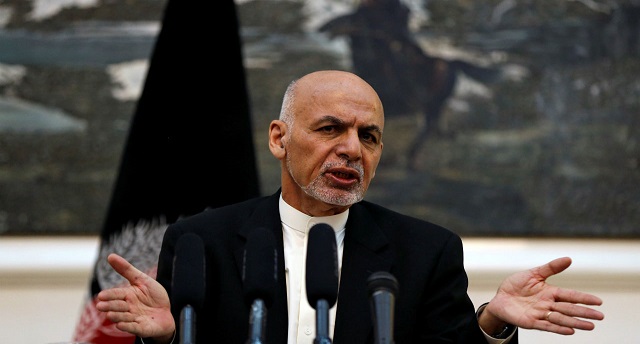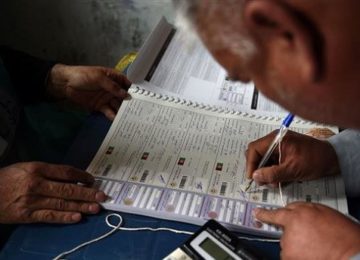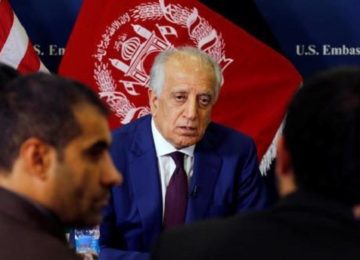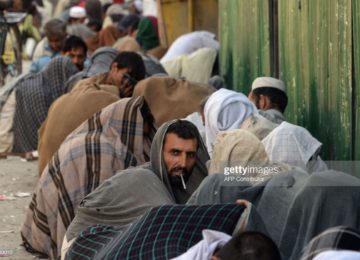The recent admission by Afghan President Ashraf Ghani that his country’s security forces and government would collapse within merely six months without US support reveals the state of affairs in the war-ravaged country. The statement of Ghani made during an interview to a US media outlet suggests that the entire Afghan state paraphernalia is just a façade. This has proven the Afghan Taliban’s long-held argument correct that the Kabul regime is only a puppet of Washington.
There is little doubt that America’s critical financial and military support to Kabul is the latter’s lifeblood but the question is why the Afghan president had to make such a revelation. There could be multiple objectives of such an admission. The foremost is that Ghani wants to convey to Washington that it has to keep on financing his government. However, the US presence in Afghanistan is also critically needed. But here the question arises is that for how long would Washington financially and militarily sustain the Afghan regime. The US has already spent nearly $1 trillion on the war effort in Afghanistan since the fiscal year 2002, including $121 billion on reconstruction efforts alone. So if by spending so much money and even losing around 2,400 of its soldiers Washington could not erect a viable state structure in Afghanistan then such a sponsored reconstruction strategy needs to be revisited. The US in the middle of last year came up with a new Afghan strategy but most of it revolves around militarily defeating the insurgency of the Afghan Taliban. There is little comprehensive non-military aspect of the strategy to win the war against the Taliban. Whereas the fundamental reason for the seemingly interminable conflict and insurgency in Afghanistan is social and political.
Before throwing light on the basic problem in Afghanistan it is important to note that President Ghani’s disclosure that the Afghan National Defence and Security Forces (ANDSF) could not withstand the Taliban insurgency for more than six months without US support reveals utmost incompetence of more than 300,000-plus members of the ANDSF. According to the US Special Inspector General for Afghanistan Reconstruction, a watchdog agency, “More than 60% [$73.5 billion] of the approximately $121 billion in US funding for reconstruction in Afghanistan since 2002 has gone to build up the ANDSF.” No meaningful and highly professional force could be raised with such a huge investment which itself is surprising.
On the contrary, President Ghani’s top US military commander in Afghanistan, Gen John Nicholson, thinks the new US war strategy in Afghanistan would achieve its objectives and the foremost of which is to defeat the Taliban. But as the new US strategy focuses on the Pakistan factor in Afghanistan believing that pressuring Islamabad would result in the Taliban’s defeat by pulling from the latter its major source of sustenance, it is somewhat unrealistic. Considering Pakistan, howsoever huge its role in Afghanistan may have been, as the mainspring of instability and insurgency in Afghanistan is somewhat incorrect and externalisation of blame. Factual analysis reveals that much of the problem lies within Afghanistan. If the 300,000-plus strong ANDSF personnel have been suffering from large-scale incompetence and lack of professionalism, could anyone blame Pakistan for this ineptitude? The Afghan leadership and its American supporters need thorough soul-searching for achieving any desired results.
The fundamental problem in Afghanistan has been its inability to establish modern self-sustained political, economic and administrative structures. The Afghan state has always been the extension of a tribal social structure. Modern Afghanistan as a result could not establish a viable and vibrant state structure and institutions respectively. Afghan society has always been based on a tribal social system. The state could not dismantle the long-existing tribal value system and pave the way for the formation of a modern, civilised, forward-looking Afghanistan. The Afghan Taliban if partly were the result of external engineering; Afghan social structure is also largely responsible for their and many other militias’ emergence.
The US and Nato allies’ war effort in Afghanistan has failed primarily because the Western forces could either not understand the true character of the conflict and insurgency in Afghanistan or the strategy has been faulty with misplaced emphasis. Realistic analysis is that Afghanistan has had lacked institution-making and infrastructure development. The two presidents which Afghanistan has had since the introduction of the existing constitution in 2003 namely Hamid Karzai and Ashraf Ghani have lacked the ability and commitment to address the multipronged conflict and crisis of Afghanistan. They could not lead from the front. The only qualifying factor for Karzai was his Pakhtun background. Same is the case with Ghani. Though President Ghani has been far more articulate and committed than Karzai, he still could not understand the dynamics of the crisis in Afghanistan and Karzai’s personal political and economic interests, which prevented him to lead from the front. Personal political ambitions also greatly compromised the effectiveness of his administration. The Western allies banking on Karzai and Ghani has proved disastrous for Afghanistan as both for their respective reasons have not been serious about meaningful engagement with the Taliban for peace talks.
This piece originally appeared in The Express Tribune on January 23, 2018. Original link.
Disclaimer: Views expressed on this blog are not necessarily endorsed or supported by the Center for Research and Security Studies, Islamabad.








